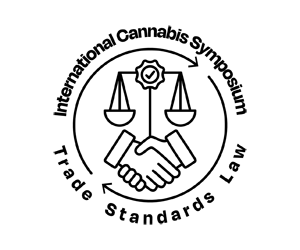Here we go
RANKING THE TOP HEMP GROWING COUNTRIES
#6 – North Korea
Starting the list with a country like North Korea might be surprising to some. But those who know the country’s history are well aware of the importance of hemp to Korean culture.
Since the beginning of both North and South Korea’s written history, traditional weavers turned hemp fiber into a fabric known as “sambe.” This is often used for funeral clothing, though that custom is rather recent.
North Korea continues to use hemp and even cultivates it on an industrial level. One reason they’ve been able to grow the plant is their cannabis laws aren’t as strict as other nearby countries. Yes, it’s true you aren’t allowed to smoke the leaves of any cannabis plant — contrary to some rumors which circulated some years ago. In fact, smoking weed (and potentially hemp) in North Korea is punishable by death.
However, at least 47,000 square meters of land is dedicated to hemp textiles in Pyongyang alone. Not to mention, hemp naturally grows throughout the country.
#5 – Chile
Rules and regulations surrounding cannabis in Chile are quite strange. It’s illegal to consume in public and forbidden to grow the plant on an industrial level. Yet, since there are no laws against private consumption and cultivation, many Chilenos take advantage of this.
So much so, Chile held the record for the highest per capita consumption throughout Latin America.
Within the Quillota Valley specifically, records of hemp cultivation go as far back as 1545. It’s been used for a number of reasons, primarily shipping and army support. Though, some sources claim its main use is for seed oil production.
Because of the informal nature of hemp in Chile, it’s hard to find exact figures on hemp acreage, but this is our best guess.
#4 – France
France produced more than double the amount of hemp for the last few decades in comparison to all other European. Though, as recent as 2014, that stat slowly changed and the rest of Europe is now growing their share of the crop.
Hemp growing in a field in France.
Some reports claim hemp has been used in France since the Neolithic times. Since then, the plant has mainly been used industrially for animal bedding, nautical applications, and textiles.
As of 2017, France grew over 43,000 acres of hemp. And that number continues to rise.
France almost experienced a death to their hemp industry. Due to the introduction of cotton, hemp production declined to a point of almost becoming extinct. However, it had a revival back in the 1960s and, since then, has gradually revived.
Luckily for France, since the crop was never banned, production never had a reason to completely stop.
#3 – United States Of America
The U.S. only recently made the list this past year with the 2018 hemp acreage report. With 78,176 total acres grown in up to 23 states, the country saw a massive expansion which earned a spot on this list.
Thanks to the 2018 Farm Bill which legalized the crop nationwide, there’s a good chance the U.S. will continue to climb this list. Right now, the vast majority of hemp in the U.S. is grown for CBD. Other forms of hemp, used in textiles, fabric, or hempcrete, is often imported. We can expect that in the coming years, the U.S. will not only grow more hemp, but more forms of the plant too.
However, due to decades of prohibition, the following two countries were able to prosper within the last decades in ways we simply couldn’t.
#2 – Canada
Health Canada, the federal agency in charge of distributing hemp licenses, reported Canadian farmers saw an 80% increase in hemp production between 2016 to 2017 – from 75,000 acres to 140,000.
Harvest takes place primarily in three providences — Saskatchewan (56,000 acres), Alberta (45,000 acres), and Manitoba (30,000 acres). Most of this cultivation focuses on extracted seeds for hemp oils, hemp protein powders, and hulled hemp seeds (similar food to sunflower seeds).
After Uruguay, Canada is the second country in the world to legalize recreational use of cannabis. However, legal CBD in Canada remains difficult to come by.
However, though the country reports they’ve seen a steady upward trend, signs are pointing to a potential decline in hemp production. The unfortunate truth is, Canada produced way more hemp than their people demanded. Therefore, prices on hemp products decreased exponentially.
The state is now working towards balancing out production with demand and, due to this, they may fall shorter on this list in the years to come.
Surprisingly, despite overall cannabis legalization and progressive attitudes on hemp, legal CBD in Canada is another matter. Technically, CBD is only available by prescription through medical cannabis dispensaries, but many people are accessing it informally on the gray market.
#1 – China
For some time, China grew nearly 70% of the world’s hemp. The earliest records of Chinese hemp use date as far back as the year 300. The main use for the plant, as with other countries on this list, was for fiber or survival food. In fact, after World War II, hemp saved many people from starving in areas of Northern China.
This brilliant use for the plant was noted by some Americans right around the time hemp prohibition began. In turn, many fought against hemp’s ban as they wanted to see its versatile uses put to work here in the States. As General Counsel Ralph Loziers of the US National Institute of Oilseed Production proclaimed in front of a congressional committee in 1937, hemp is used by a variety of nations around the world:
“Millions of people every day are using hempseed in [Asia] as food. They have been doing this for many generations, especially in periods of famine.”
Not only did the Chinese government never ban on the plant, they in fact supported industrial growth. Allowing hemp to prosper to an estimated 200,000 to 250,000 acres.
TOP HEMP GROWING COUNTRIES & HEMP AS A WORLDWIDE CROP
Though most of China’s hemp is roasted for domestic snacks and oil, nearly 40% of it is exported to other countries. That means nearly 90,000 acres of hemp — more than that grown in America last year — is in demand.
Not just the U.S., but the entire world seems poised on the edge of a new hemp boom.
As we continue to fight against prohibition, we often forget about the power this crop already exerts on a worldwide scale.
While the United States may be behind on this list, it’s vital to remember we didn’t fight to legalize the crop purely for our sake. High production would allow more trade with more nations. We’ll also be able to fully pursue the sustainable potential of hemp. Hemp may just be another factor in bringing this world a little together.
Source: https://ministryofhemp.com/blog/hemp-growing-countries/


















